
Are energy costs limiting what you can do? Do you own or lease your building or chapel? The government’s energy efficiency scheme is issuing grants to registered charities and community groups to upgrade their buildings. The VSCE Energy Efficiency Scheme is a government grant for energy efficiency. It could be worthwhile considering if your Friends group has its own building. Grants are available for sums between £2,000 and £150,000.
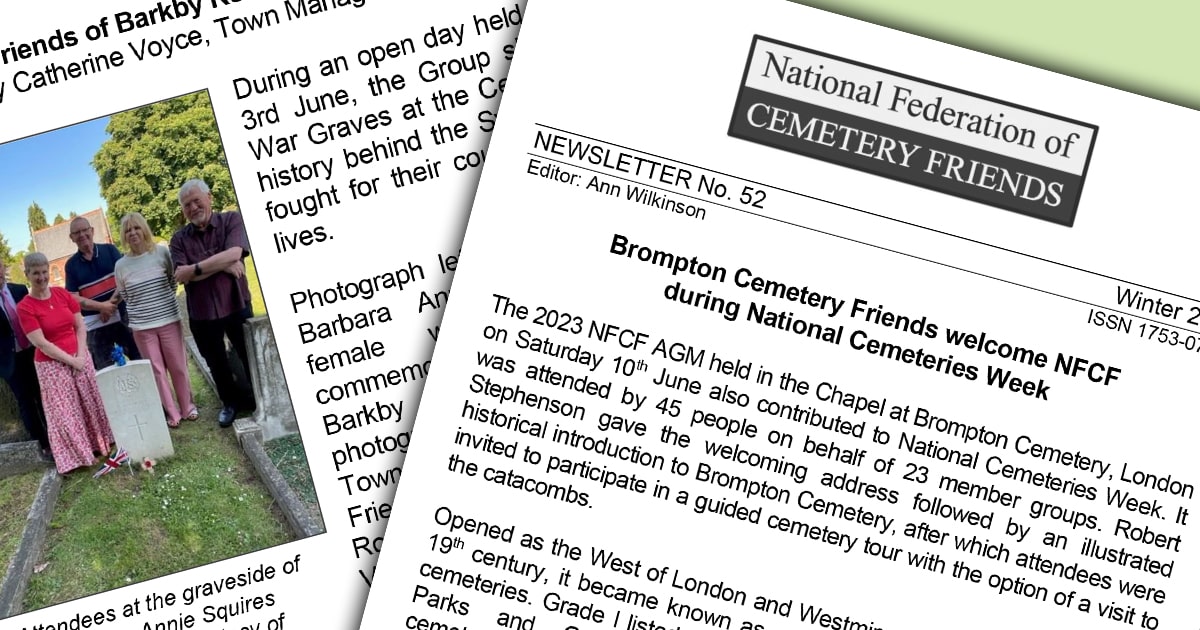
Newsletter 52, Winter 2024
- Brompton Cemetery Friends welcome NFCF during National Cemeteries Week
- On the shelf at Brompton Cemetery
- National Cemeteries Week (NCW) 2023
- Friends of Barkby Road Cemetery, Syston
- NFCF website: help us make this your own
- An update on the Horton Cemetery research project
- A Grand Day Out!
- Recognition for NFCF members
- The Cemetery Research Group website
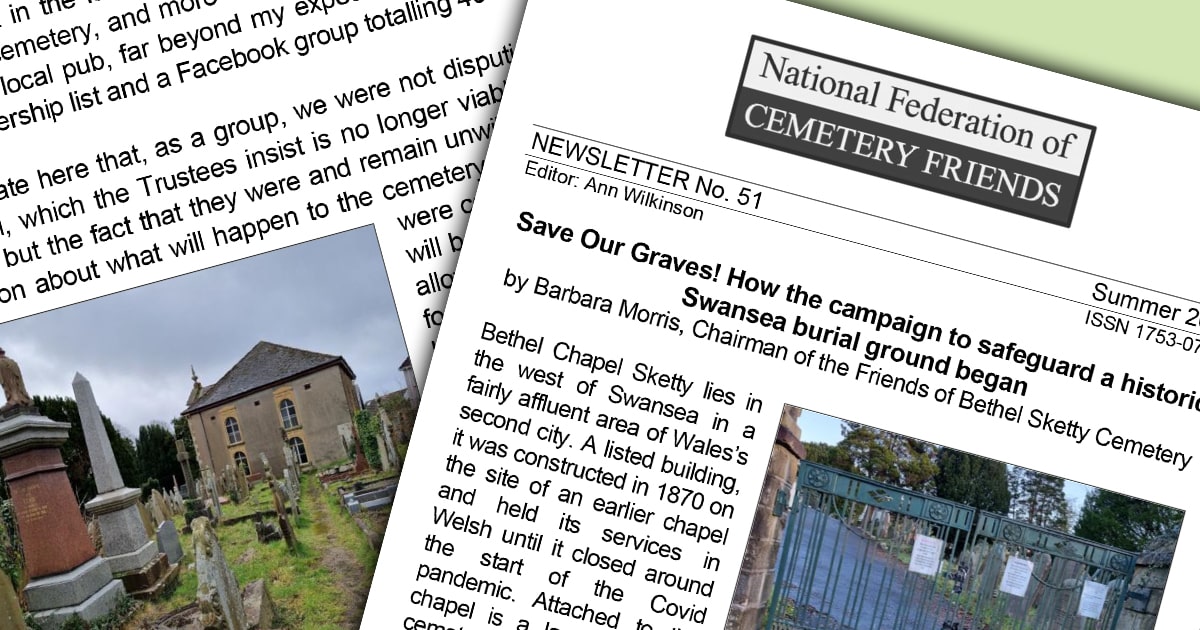
Newsletter 51, Summer 2023
- Save Our Graves! How the campaign to safeguard a historic Swansea burial ground began
- Churchyard carbon capture: St John Baptist, Cirencester
- Wildflower area at Beckett Street Cemetery
- Warriston Cemetery Friends: chance meeting leads to poignant photo ‘going viral’
- Friends of Tunbridge Wells Cemetery
- POTM, GOTM and now ‘IM’
- The Friends of St Mary’s Churchyard, Chichester
- Members News
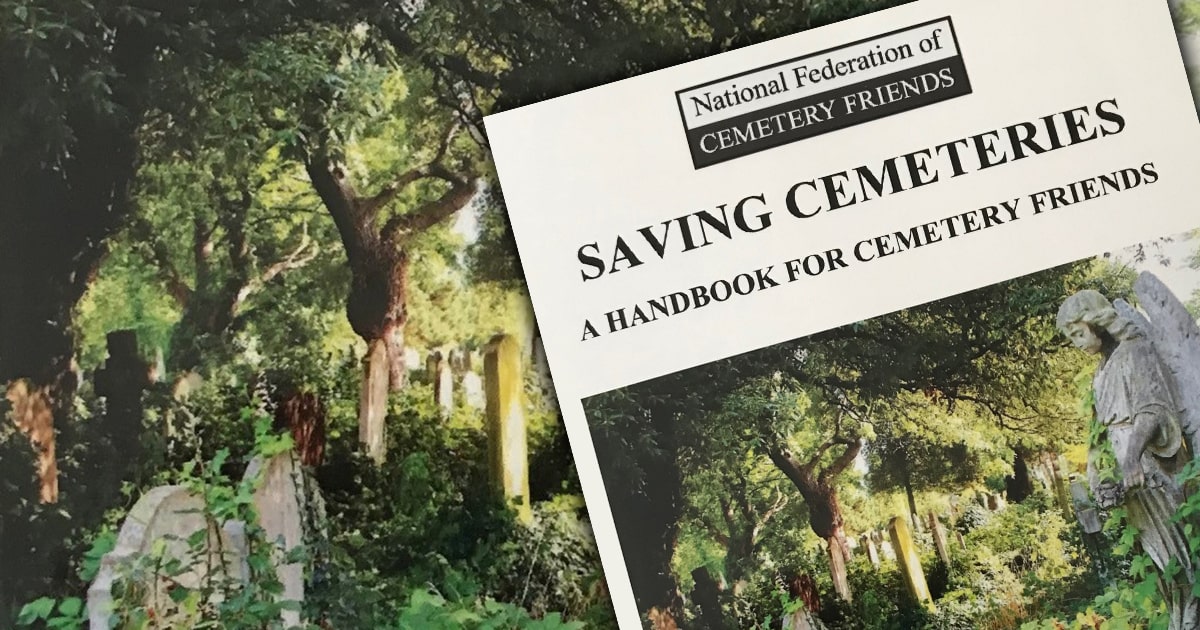
This book contains step-by-step guidance on all aspects of setting up and running a Friends Group (indeed, it would be of value to non-cemetery related groups too) as well as useful case studies showing how successful groups established themselves.
The book is also helpful for established groups who are looking for ideas to influence the bodies that operate cemeteries, seeking ways to help cemeteries, devising activities for groups, or fundraising or applying for external funding.
Fully revised and updated in 2019 with a wealth of new information and many new photographs, the latest edition of the book is now available for purchase.
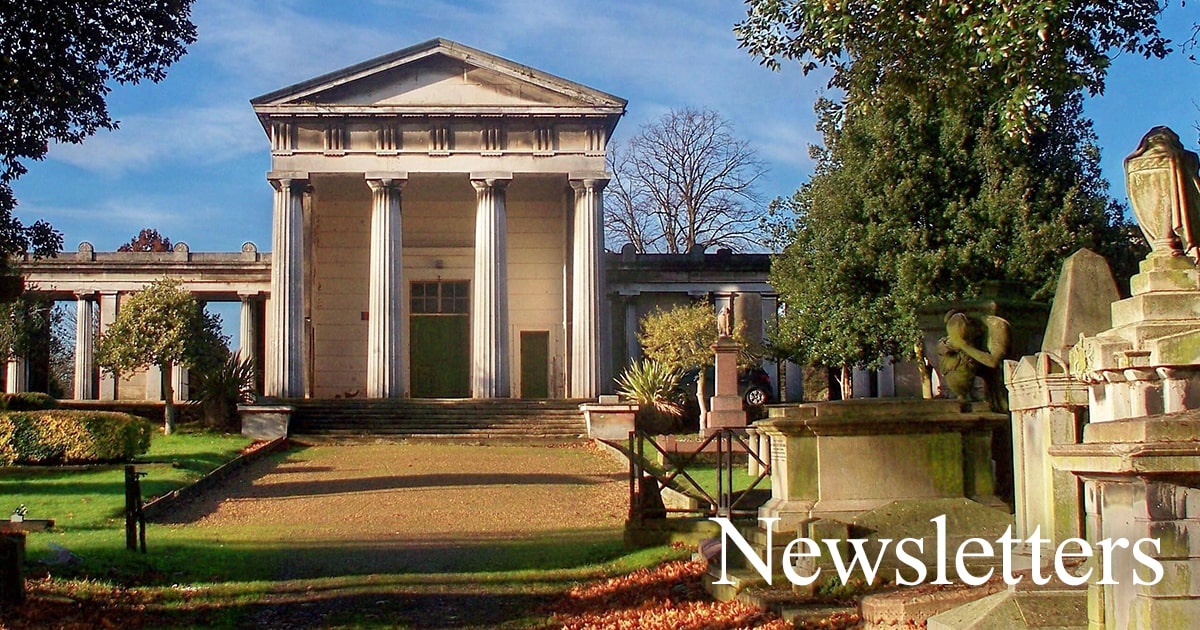
Our newsletters include news and updates from members of the National Federation of Cemetery Friends, together with useful information about supporting the work of volunteers, conservation, restoration, heritage, tours and events. It is distributed free of charge to members.
Members that are subscribed to our mailing list will receive an email when the latest edition is published.
Newsletter PDFs available to download:
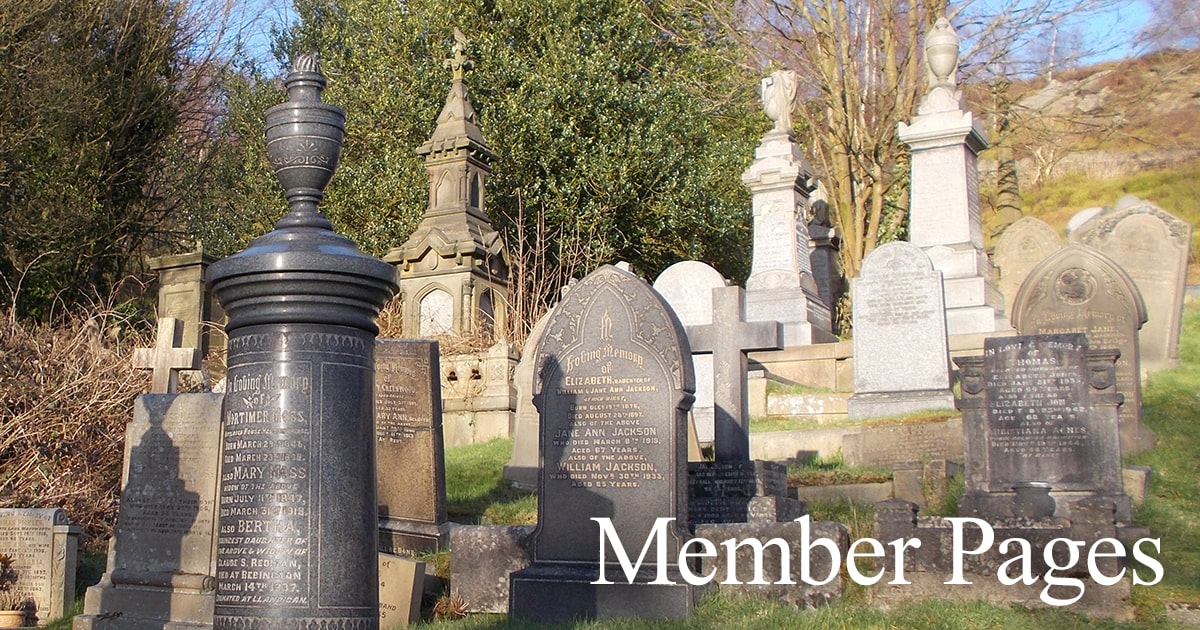
Member Pages help to promote your cemetery friends group to a wider audience.
In this guide we describe the information that can be provided.
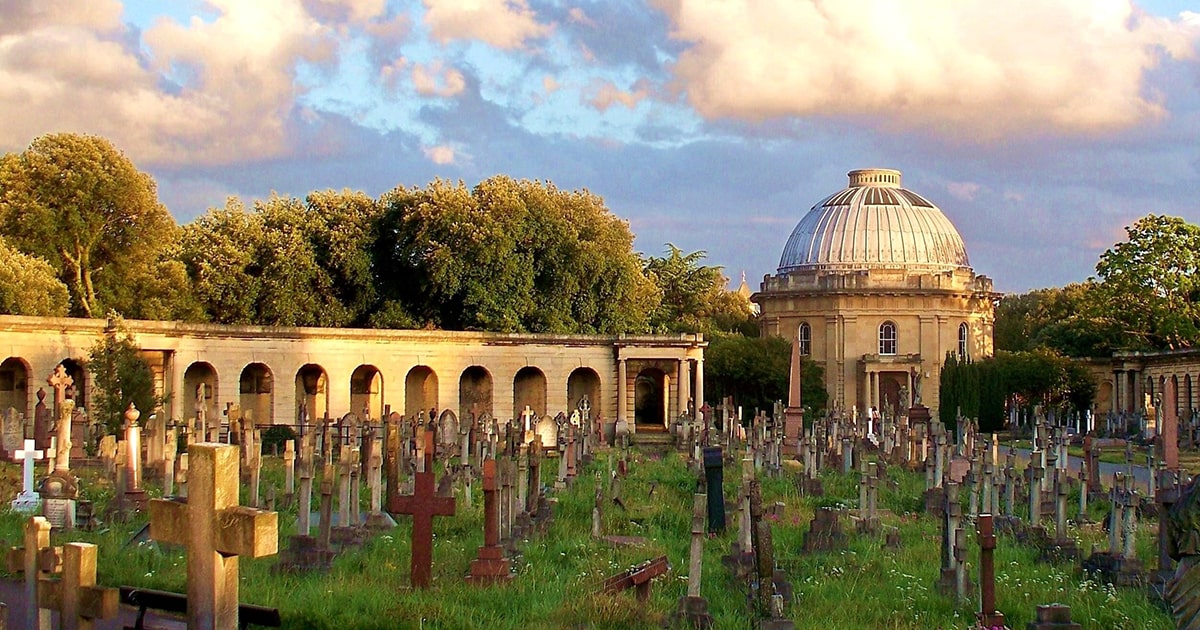
Forty years ago Brompton Cemetery’s main buildings were listed Grade II and sometime in the distant past five of the individual monuments were also listed. The monuments acquiring this distinction were those of George Godwin, John Jackson, Frederick Leyland, Emmeline Pankhurst and Valentine Prinsep. Why these five were singled out is not clear. One could imagine it was the result of a flying visit by the official designators rather than an exhaustive review of the Cemetery’s worthy monuments. This small quota remained constant until a decade ago when the listing of the monuments to the Brigade of Guards and Ft Lt Reginald Warneford brought the total to seven.
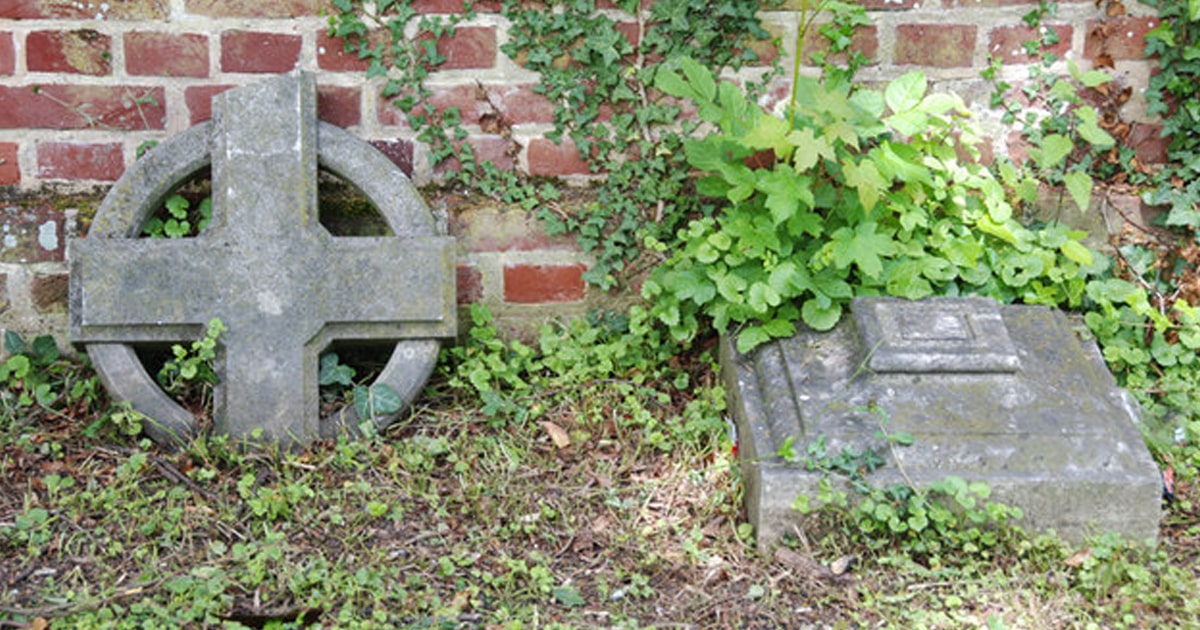
Question by J G (Wales), April 2012. I wonder if you could help me. I am part of a small group just starting out, perhaps a little too late. Could you direct me as to where I might find information on graveyard law regarding moving headstones? The church is a listed building set within the grounds of a closed down Victorian mental hospital which has been sold on to a developer. The developer has demolished the lynch gate and cleared away the headstones in the garden. Could you advise on who I might contact? Many thanks.

There seems to be some confusion as to how volunteers fit into the framework of an HLF Bid and, more generally, unnecessary trepidation at the prospect of making a Bid. Dr Henry Will MBE, Chairman of Ford Park Cemetery Trust, has written this note prompted by the discussion which took place at the 2011 AGM under ‘Any Other Business’.
Generally speaking, volunteer involvement is very important to HLF in all projects but the extent to which volunteer hours can be used as part of partnership funding is quite restricted. If the HLF funded project includes a grant of more than £50,000 and if the delivery of the project involves the input of volunteers, as for example a community project or education project, then volunteer hours can be used as part of the partnership funding, which is currently 5% for grants under £1,000,000.
Read more: The Role of Volunteers in Heritage Lottery Fund Bids
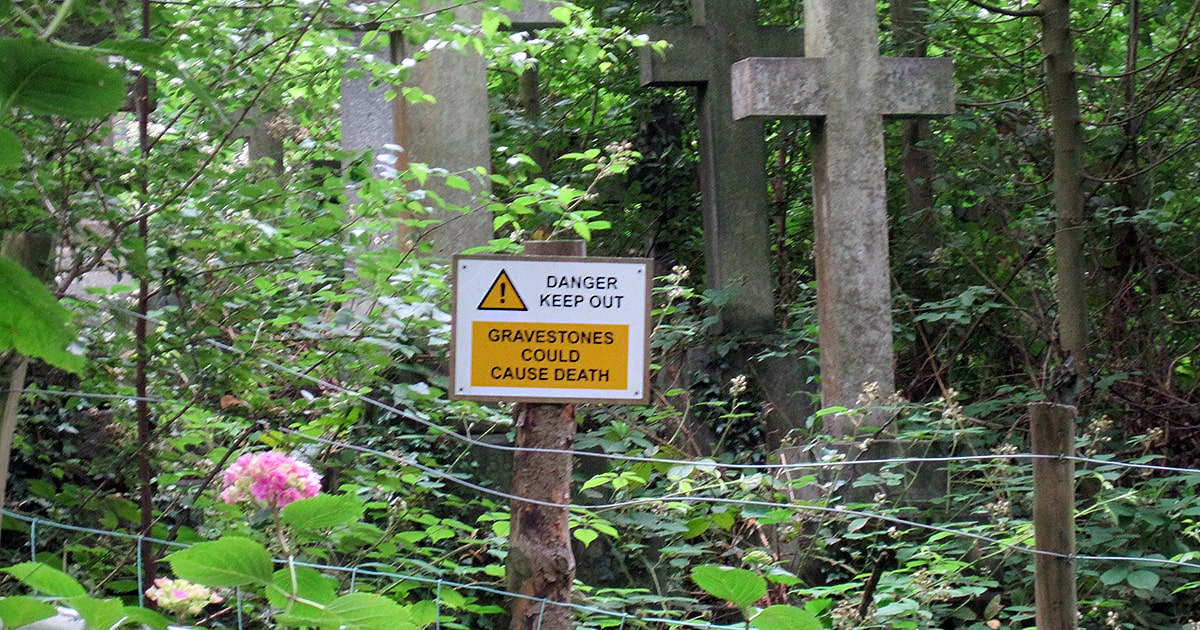
The introduction by some local councils and cemetery owners of stability testing and /or a deliberate policy of going into a burial ground and laying flat row upon row of headstones has caused much public reaction. The original explanation that it was a Health and Safety Executive Directive proved to be unfounded, an internal memo in the HSE noted awareness and concern on memorial safety but was not intended for general publication. Some councils have had to re-instate the laid down memorials or pay compensation when they did not follow the correct procedures. In the case of consecrated areas in a public cemetery the council has to obtain a faculty [a legal permit] from the Bishop's Consistory Court. in cases of emergency where stones are deemed to dangerous the Consistory Court can be contacted by telephone.
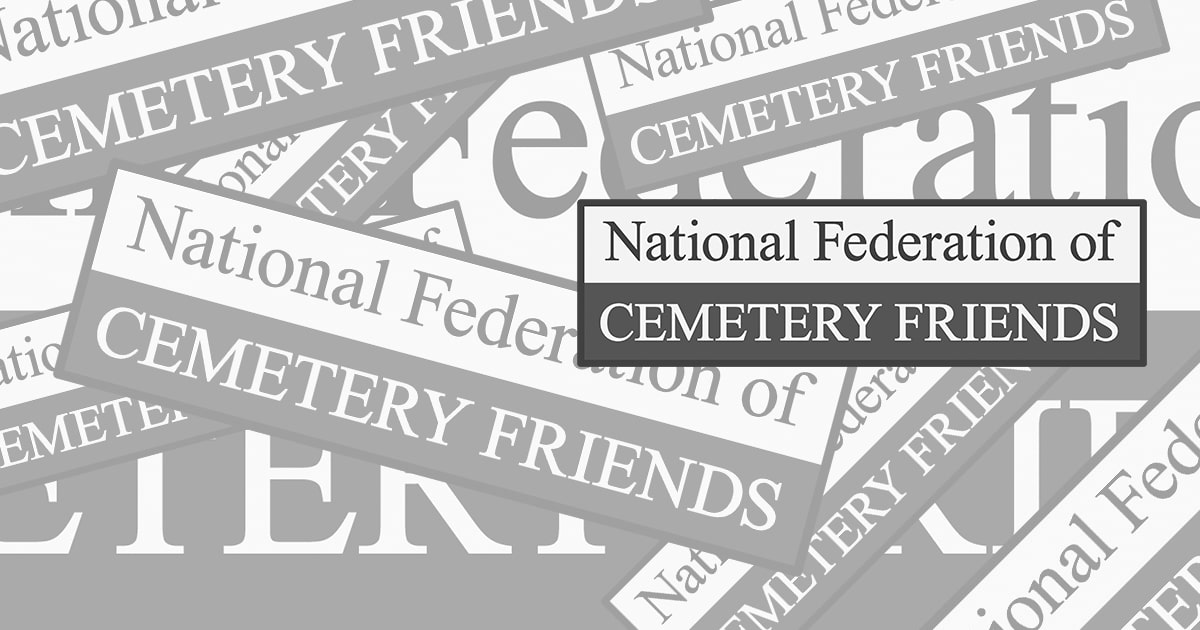
The logo for the National Federation of Cemetery Friends was redesigned in 2015. Members are welcome to download our logo pack to use on their web sites and literature. Four file formats are included: EPS, JPEG, PNG and TIFF. EPS is recommended for print. PNG is recommended for web sites because it maintains transparency around the logo.
Please resize the images to suit your requirements.